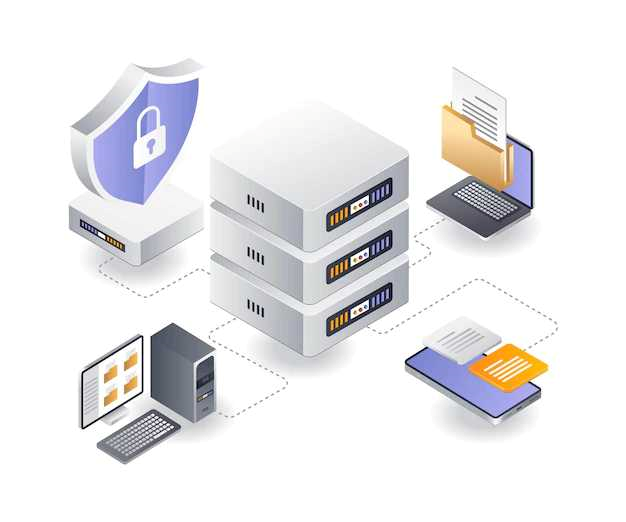Difference between a Server and Database| Access Database Development
What is Server?
A server is a computer system that provides services to other computer systems and their users. For example, a web server may provide services such as website content, files, and applications. A database server may provide database services such as storing and retrieving data.

Different types of Server
An application server is a type of server that provides access to application programs. Application servers are usually used in conjunction with a database server and web server.
2. Web server
A web server is a type of server that provides access to web pages. Web servers usually provide services such as website content, files, and applications.
3. Database server
A database server is a type of server that provides access to a database. Database servers usually provide services such as storing and retrieving data.
4. File server
A file server is a type of server that provides access to files. File servers usually provide services such as website content, applications, and data.
5. Print server
A print server is a type of server that provides access to printers. Print servers usually provide services such as printing documents and images.
6. Mail server
A mail server is a type of server that provides access to email. Mail servers usually provide services such as sending and receiving email.
7. FTP server
An FTP server is a type of server that provides access to files using the FTP protocol. FTP servers usually provide services such as uploading and downloading files.
8. DNS server
A DNS server is a type of server that provides access to domains. DNS servers usually provide services such as resolving domain names to IP addresses.
9. VPN server
A VPN server is a type of server that provides access to a VPN. VPN servers usually provide services such as tunneling data traffic through a VPN.
10. Proxy server
A proxy server is a type of server that provides access to another server. Proxy servers usually provide services such as caching or forwarding requests to another server.
What are the differences between Access databases and MySQL?
What is a database?
A database is a collection of data that can be accessed by computers. Databases are usually organized into tables, where each table contains a collection of data about a particular subject. For example, a database might contain a table of customers, where each customer is represented by a row in the table.
Different types of databases:
1. Relational database
A relational database is a type of database that stores data in tables. Tables are usually related to each other by means of keys. Keys are used to identifying rows in a table. For example, a customer table might have a customer ID key that is used to identify each customer.
2. Non-relational database
A non-relational database is a type of database that does not store data in tables. Non-relational databases are usually more flexible than relational databases, but they can be more difficult to query.
The Main Difference Between a Server and Database
The main difference between a server and a database is that a server is a computer system that provides services to other computer systems, while a database is a collection of data that can be accessed by computers. Servers usually provide services such as website content, files, and applications, while databases usually store data in tables.
Scalability
- If utilizing a DBMS like MS SQL, where the size of the log and data files may be raised, with restrictions starting at 2TB, raising the size of a database is pretty straightforward based on licensing choices.
- An extra expenditure in hardware and memory would be necessary to increase a server’s manufactured technical capabilities.
Migration
- Migrating a complete server configuration or database system to a new platform, such as a new hardware unit to replace an aging server, or moving a database system to the cloud, maybe a challenging process that requires careful preparation.
- It is practicable to rebuild the old (necessary parts) of the server configuration on a new hardware unit for server migration, which necessitates careful testing and typically some fine-tuning.
- With new and varied capabilities, compatible data formats, and schemas, among other things, database migrations to a new software platform present several obstacles.
- Before migrating, a lockdown on database updates would be necessary to prevent having several versions of the same database. After the new database has been implemented, it is then made available in the production environment.

Our team of experts can help you design a database and choose the right server that meets your needs. Contact Access Database Development today to get started.
